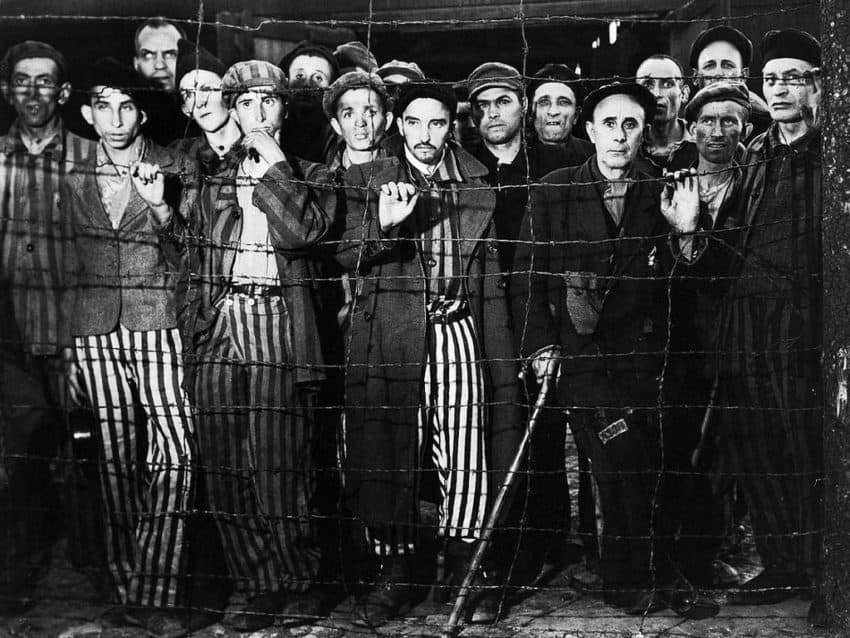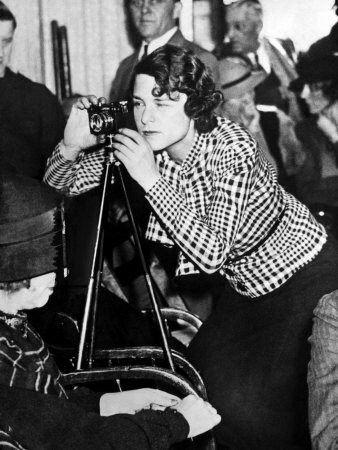
Margaret Bourke-White was one of the most celebrated photographers of World War II. This is a photo she took of prisoners in the Nazi death camp Buchenwald. Below is a picture of Bourke-White. Flickr. For more information about her life, click on this link. Click on photo to enlarge.
By: Phil Kohn. Dedicated to the memory of his father, GM3 Walter Kohn, U.S. Navy Armed Guard, USNR, and all men and women who have answered the country’s call in time of need. Phil can be contacted at ww2remembered@yahoo.com.
Although Erwin Rommel has been ordered to defend Tripoli, Libya, he decides to save his troops, and abandons the city on January 22, 1943, planning to make a stand around Mareth, Tunisia, some 200 miles to the west. At the ongoing Casablanca Conference, a further source of disagreement between the Allies is Roosevelt’s call for the “unconditional surrender” of Axis combatants. Churchill wants to split the Axis by treating Italy differently, but is persuaded to go along with the U.S. view after considering that a more-lenient treatment of Italy will only antagonize allies Greece and Yugoslavia. In Germany, Hitler — to counter German losses of armor on the Eastern Front — orders that tank construction is to take priority over shipbuilding. Photographer Margaret Bourke-White becomes the first woman to fly along on a U.S. Army Air Forces bombing mission — an attack on a German-held airfield in Tunis.
In North Africa, the Allies capture Tripoli, Libya, on January 23. The last German airfield in the Stalingrad pocket falls. Hitler reissues his orders of “no surrender” to Field Marshal Paulus and his Sixth Army in Stalingrad. In the Solomon Islands, Japanese army and naval units receive orders from Imperial Japanese Headquarters in Tokyo to begin withdrawing from Guadalcanal and surrounding islands. Since August 7, 1942, the Japanese have lost 65 naval vessels and over 800 aircraft in the Solomons. Losses of troops have been in the tens of thousands, and survivors — facing more than 50,000 American troops — are on less than half rations. Hunger and disease are killing as many Japanese soldiers as the Americans are.
With the capture of Sanananda by Australian troops, fighting in the Buna-Gona area of Papua-New Guinea is officially declared over on January 24. The Allies have suffered over 3,000 casualties; the Japanese, over 7,000. Of the roughly 350 prisoners taken alive in the area, the majority are Chinese or Korean forced laborers. For the first time since the beginning of the war, German newspapers begin printing pessimistic reports about the status of affairs on the Eastern Front.
Prime Minister Churchill and President Roosevelt formally end the Casablanca Conference with a joint announcement on January 25 demanding the unconditional surrender of Germany and Italy and their allies. At Stalingrad, the Red Army succeeds in splitting the remnants of the German Sixth Army into northern and southern pockets.
The British Eighth Army on January 26 takes Zaula, Libya, which is less than 100 miles from the Tunisian frontier. Manpower shortages on the fighting fronts force the Germans to replace anti-aircraft crews in Germany with boys as young as 15 who are members of the Hitler Youth organization. In Moscow, Soviet Premier Joseph Stalin announces that the Red Army has “destroyed” 102 German army divisions, and captured 200,000 prisoners.
The first solely American air raid against Germany occurs on January 27 as 91 bombers of the U.S. Eighth Air Force target the large naval base at Wilhelmshaven. All the planes make it back safely to base. In the U.S., the Office of Price Administration announces that “all edible meats” will be rationed, beginning on April 1. The OPA had been asking the populace to curtail their consumption voluntarily, but the appeals have not produced the desired effect.
On January 28, a new conscription law goes into effect in Germany that decrees that all men between 16 and 65, and all women between 17 and 45, can be drafted into government service for “labor.” In the U.S., Secretary of War Henry Stimson announces that the War Department will “ease restrictions on Americans of Japanese ancestry and employ loyal ones in war work,” including the establishment of a Japanese-American unit in the U.S. Army.




